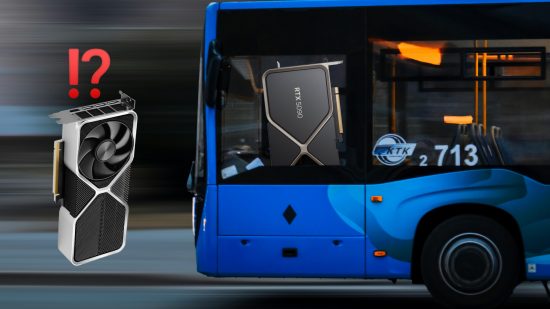The RTX 50 series is expected to offer sizeable generational improvements over the current RTX 40 series of GPUs, including to memory bandwidth. This spec might not seem so obviously important, but the rumored wider memory bus on the RTX 5090 will play a large part in making it so powerful. Sadly, though it seems that Nvidia doesn’t plan to trickle down this spec bump to the RTX 5080 or other cheaper graphics cards.
Part of the reason that the RTX 4090 finds itself on our best graphics card list is because of its memory bandwidth, coming in at over 1TB/s. So far, Nvidia is the only manufacturer to accomplish such a feat, with AMD’s flagship card falling some gigabytes short of that metric. This number isn’t just for show, though, as this specification becomes all the more important the higher you crank your games’ frame rate and resolution.
Recently, it was reported that the Nvidia’s GB202 GPU, which we fully expect to be launched as the RTX 5090, will sport a 512-bit memory bus. Combined with GDDR7 VRAM its memory bandwidth should be near-double that of the RTX 4090 with its 384-bit bus. Naturally, this stirred hope that this same uplift would extend to less-powerful GPUs, but hardware leaker kopite7kimi claims otherwise.
In no uncertain terms, kopite7kimi claims that GB203 and GB205 GPUs will respectively arrive equipped with 256-bit and 192-bit memory buses. For context, this mirrors the AD103 and AD104 GPUs used in the RTX 4080 and RTX 4070, presumably leaving GB206 with a 128-bit bus, like AD106.
This is a disappointing turn of events, particularly given how budget graphics cards like the RTX 4060 have been rightly criticised for low memory bandwidth and VRAM capacities. Don’t forget, the RTX 3060 12GB outclasses its Lovelace successor in both of these respects.
However, GDDR7 does provide a glimmer of hope that Blackwell GPUs will be decidedly improved over the current generation. In place of 8GB of VRAM on a 128-bit bus, we could see 12GB thanks to the new memory spec, in addition to faster memory clocks bolstering bandwidth further.
It shouldn’t be long now before we get a glimpse of what Blackwell is capable of, at least in the data center. We could also see RTX 50 series graphics materialize before the year is out. To be less optimistic and more realistic though, a 2025 launch seems likely, at least for the majority of the range.

